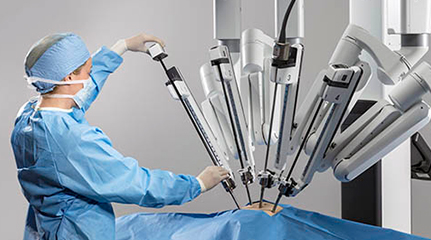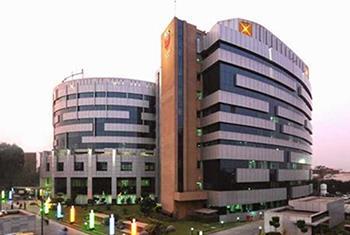About The Da Vinci Surgical System
The Da Vinci® Surgical System is a sophisticated robotic surgery system that enables surgeons to operate on the prostate with enhanced vision, control, and precision, is used to perform robotic-assisted radical laparoscopic prostatectomy.
How does DaVinci robotic surgery work?
The Da Vinci robotic system is driven by highly sophisticated and advanced robotic technology used to carry out various types of surgeries with extreme precision being a minimally invasive complex surgery.
Due to its effectiveness and safety, the da Vinci robotic surgical system is now utilized all over the world. With the aid of this system, the surgeon is given the dexterity and complete control necessary to perform the surgery through a precise incision of 1 to 2 cm.
- The parts of the da Vinci robotic system include:
- A surgical console with an ergonomic design
- A cart for the patient
- Four robotic arms that can interact
- Instruments for an endowment that can bend and rotate
- A powerful vision system that gives the surgeon a 3D HD view of the patient’s body.
It increases the surgeon’s recognition and control of small blood vessels, enlarging the surgical field up to 15 times and minimize blood loss.
Due to this some of the major benefits experienced by surgeons using the Da Vinci Surgical System over traditional approaches are:
- Greater surgical precision,
- Increased range of motion,
- Improved dexterity,
- Enhanced visualization,
- Improved access.
Currently, the Da Vinci Surgical System is being used in hundreds of locations worldwide, in major centres in India, Malaysia, Thailand, United Arab Emirates.
Approximately 1.5 million procedures including general, urologic, gynecologic, thoracoscopic, and thoracoscopically-assisted cardiotomy procedures have been performed using the da Vinci Surgical System.
Roughly, three out of four prostatectomy patients are choosing the Da Vinci system for surgical procedures around the world.







